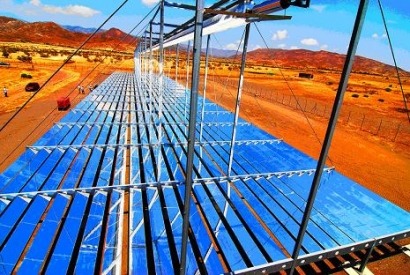
The solar community in the Western world is undergoing radical change in 2012. Falling PV prices and the ending of the IS Department of Energy loan guarantees in the US have hit the CSP industry hard, making it difficult to secure the necessary political and financial support to continue development.
The PV market is also on the brink of collapse, with damaging effects from government incentive programmes set to take hold across Europe. The suggested cuts in Germany this week would amount to a 30-40% depression in 2012, on top of a 15% reduction that already occurred in January.
Whilst doom and gloom ripples across the once prosperous European and US markets, a new realm of opportunity has opened up for emerging markets. Sitting at the top of this pile is MENA, which with an endless supply of the world’s most intense solar radiation is ready to fill the demand gap for solar that the mature markets can no longer fill.
Due to the on-going political turmoil being seen across Northern Africa, developments in this region have slowed down. In the Middle East however this is quite a different story. Only last month, Dubai announced a Dh12 billion solar power project to meet growing energy needs. The first phase of the mammoth project will produce energy using PV, with a production capacity of 10MW by 2013. By 2030, the project will be set to generate 1,000MW. Dubai hopes to increase its renewable energy production to 1% by 2020 and to 5% by 2030.
Oil-rich Saudi Arabia has a target of achieving 10% renewables by 2020. According to the Embassy reports, the sun in Saudi Arabia emits about 7,000 watts of energy per square meter over an average of 12 hours every day. According to Nicolai Dobrott from Apricum in Germany, Saudi Arabia has the biggest solar potential in the region – he indicated a 3.5GW market by 2015 – followed by UAE.
Abu Dhabi has invested $15 billion towards meeting the target of 7% energy produced from renewables by 2020. Multifaceted renewable energy company Masdar, has installed a 10MW PV plant whose polycrystalline and thin-film modules occupy a 22-hectare site at the outer boundary of Masdar City, making it the largest grid-connected solar plant in the Middle East. Furthermore counteracting with CSP, they’re Shams 1 project is due for completion this year. With an operational capacity of 100MW, it will rank amongst the largest parabolic trough power stations in the world.
With the industry facing tough times, the MENASOL 2012 event was shaped to promote the future of solar in the MENA region. Not just focussed on CSP, but an equally sized look at PV as the biggest players from each technology side of the solar spectrum come together to secure projected market opportunities.
For additional information:

